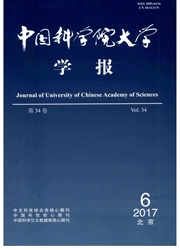

 中文摘要:
中文摘要:
以塔克拉玛干沙漠为主的中国西北沙漠区是东亚地区主要沙尘释放源区之一.利用美国大气研究中心(NCAR)的公用气候模式(CCM3)与一个沙尘释放和沉降模式(DEAD)相嵌套、能够反映沙尘扬起及输送和沉降动态过程的耦合模式系统(CCM3-DEAD),通过改变中国西北沙漠一半沙漠区下垫面类型的数值模拟试验,对比分析了西北沙尘源区地表类型的改善对东亚地区沙尘释放及大气粉尘含量变化的可能影响.研究结果表明,地表覆盖状况与沙尘释放关系密切,沙尘源区地表类型的改善可明显抑制沙尘的释放.中国西北沙漠一半沙漠区地表的改善,可引起整个中国北方至蒙古国的大气粉尘含量减少,使大气环境明显改善.假设以塔克拉玛干为主的沙漠一半沙漠区不存在(当地地表类型若以温带草原植被为主),则整个中国北方沙尘释放和沉降通量仅为目前的50%左右.模式中分4个粒级描述沙尘释放及沉降通量,其中1.0~2.5μm和2.5~5.Oμm2个粒级的贡献约占总通量的76%,对比试验显示在没有塔克拉玛干等沙漠存在的情况下这2个粒径释放通量大大降低.由西北沙漠一半沙漠区释放的沙尘,经大气环流传输可直接影响到中国东北、华北等东部地区的大气粉尘状况,并对日本、韩国及其周边地区也有一定影响.
 英文摘要:
英文摘要:
The northwestern Chinese desert, with Taklimakan Desert as its main body, is one of important sources of the Asian airborne dust. Using the NCAR Community Climate Model (CCM3) coupled with a mineral Dust Entrainment and Deposition model (DEAD), we study effects of land-cover change in desert regions of northwestern China on the airborne dust over East Asia. The emission and contribution of the northwestern deserts to the Asian airborne dust are simulated and analyzed through two groups of numerical experiments with changed land-cover types in desert and semi-desert regions of the northwestern China. The main results can be concluded as the following: The dust emission and airborne dust are closely related to land-cover conditions. Land melioration, such as a change in the land surface type from desert or semi-desert to grassland, restrains the dust emission significantly. The influence of the northwestern deserts on the airborne dust is usually overcastted to the northern China and even to Mongolia. Without Taklimakan Desert, the total emission and deposition fluxes would decrease by up to 50 % over the northern China. The emission fluxes of the second and third diameters ( 1.0 - 2.5μm and 2.5 - 5.0μm), which account for 76 % of the total emission flux, significantly decrease in the no-desert experiment. The dust from the northwestern desert and semi-desert regions can influence the air quality of North China and Northeast China, and even Japan and Korea, through the transport of the atmospheric general circulation.
 同期刊论文项目
同期刊论文项目
 同项目期刊论文
同项目期刊论文
 Multi-proxy evidence for Late Pleistocene- Holocene climatic and environmental changes in Lop-Nur, X
Multi-proxy evidence for Late Pleistocene- Holocene climatic and environmental changes in Lop-Nur, X Numerical experiments on contribution of Chinese northern desert to airborne dust over the Asian con
Numerical experiments on contribution of Chinese northern desert to airborne dust over the Asian con Diurnal variation of summer rainfall over the Tibetan Plateau and its neighboring regions revealed b
Diurnal variation of summer rainfall over the Tibetan Plateau and its neighboring regions revealed b 期刊信息
期刊信息
